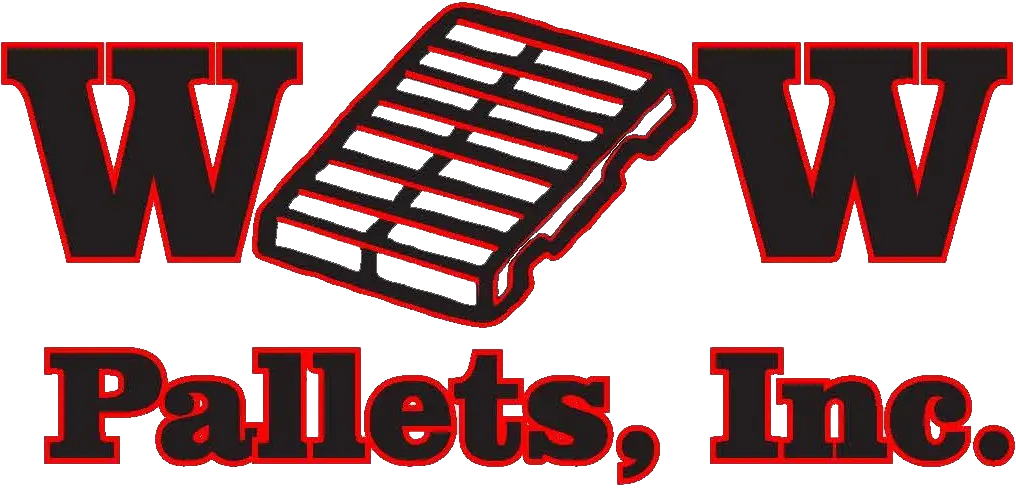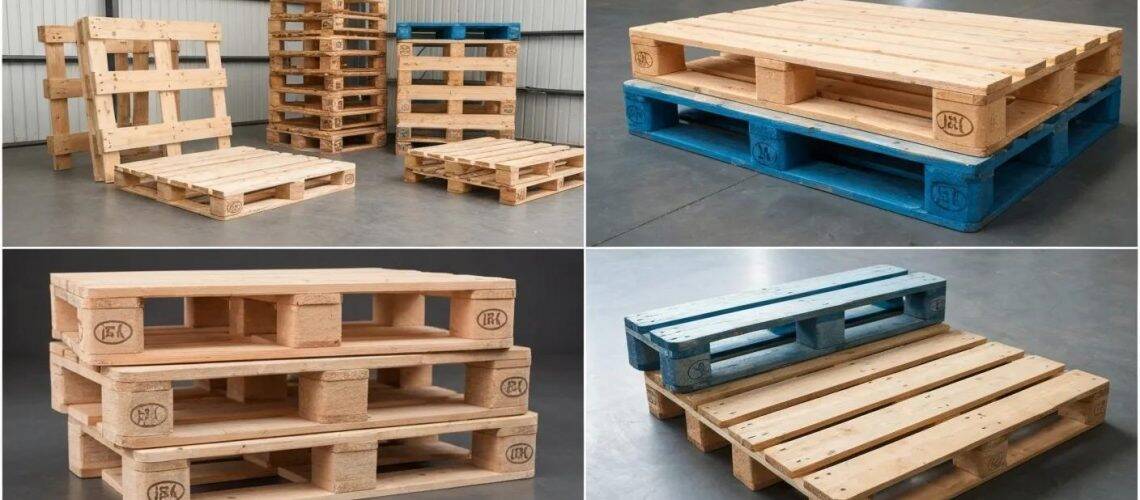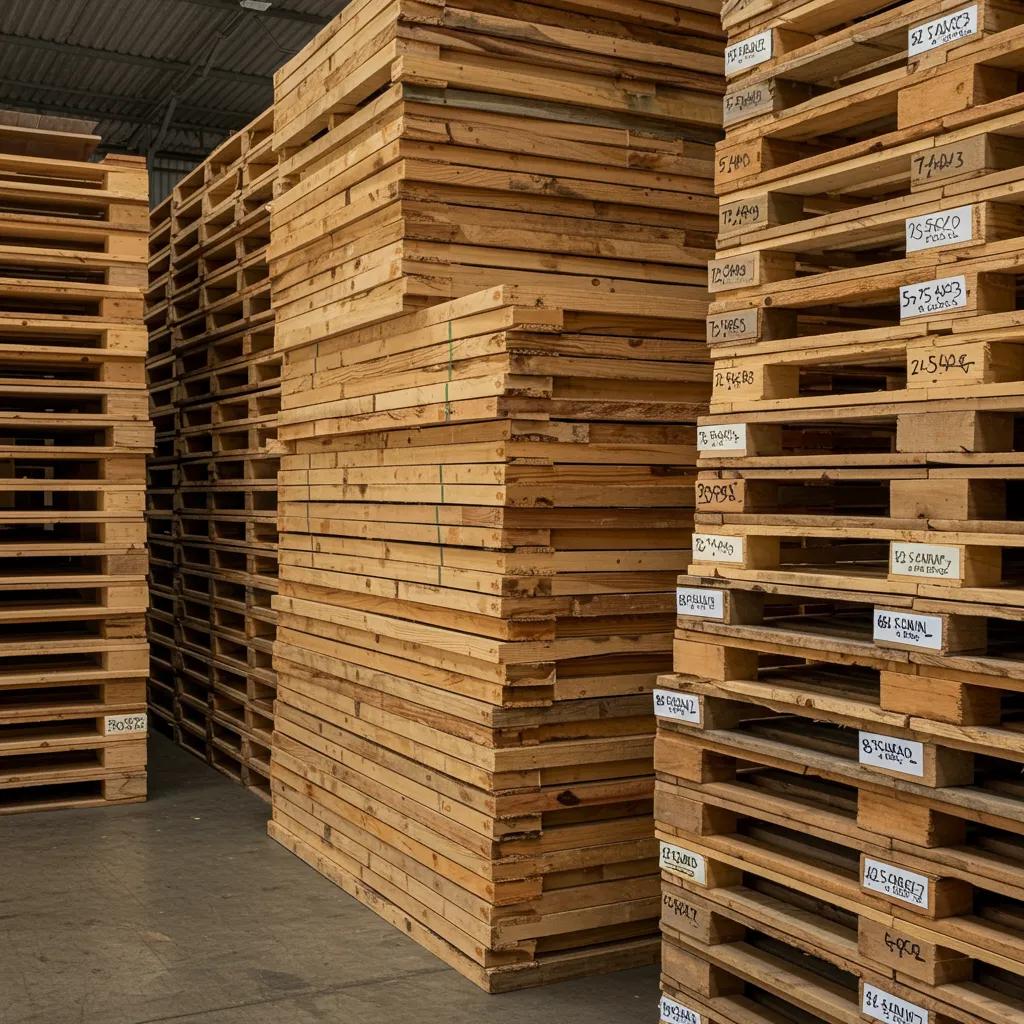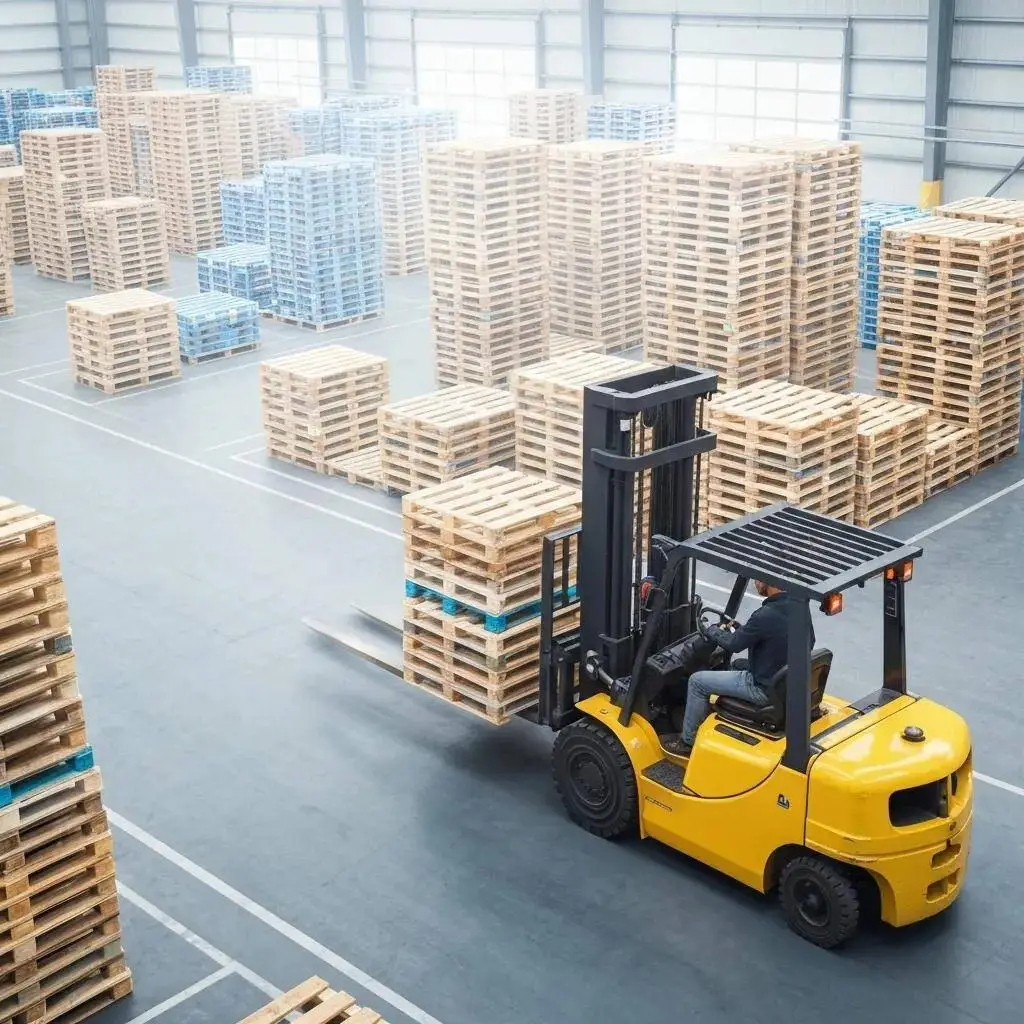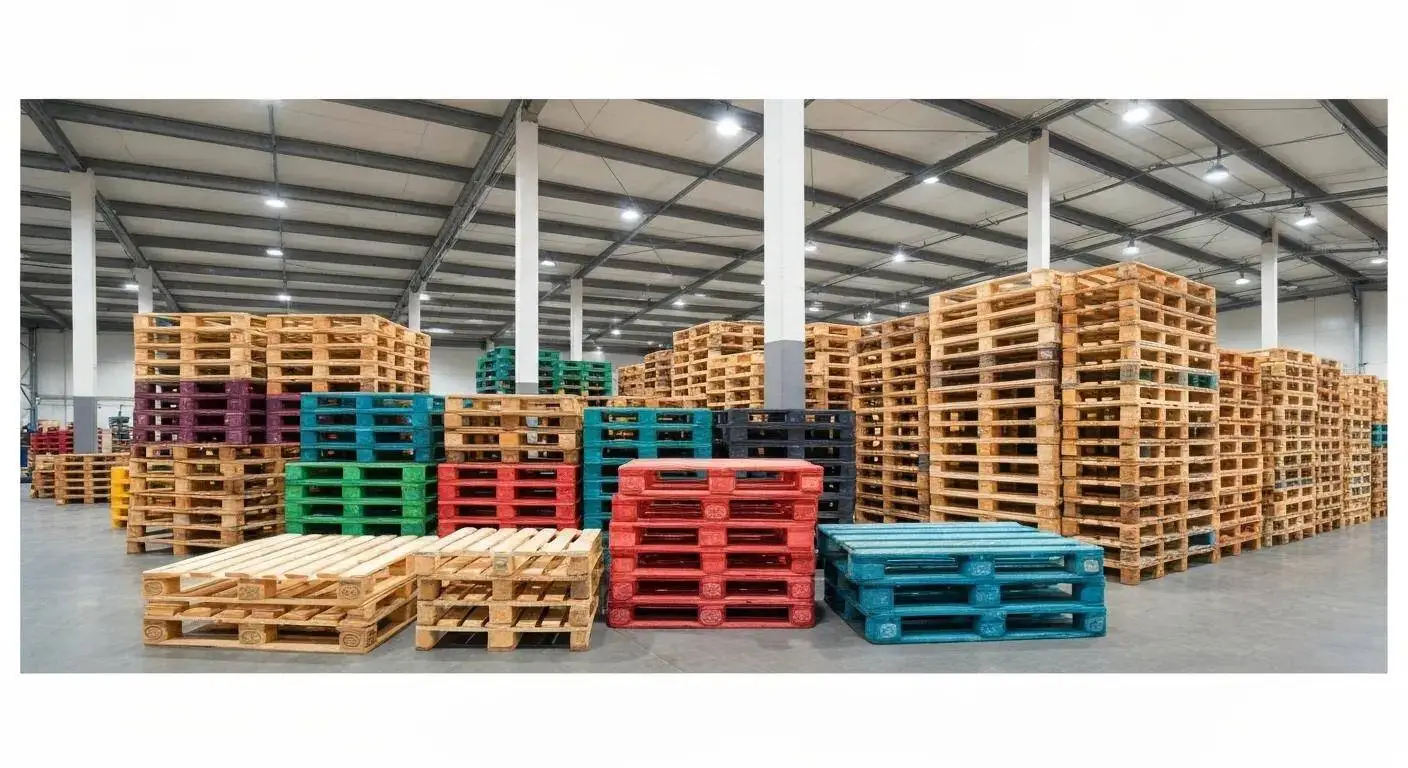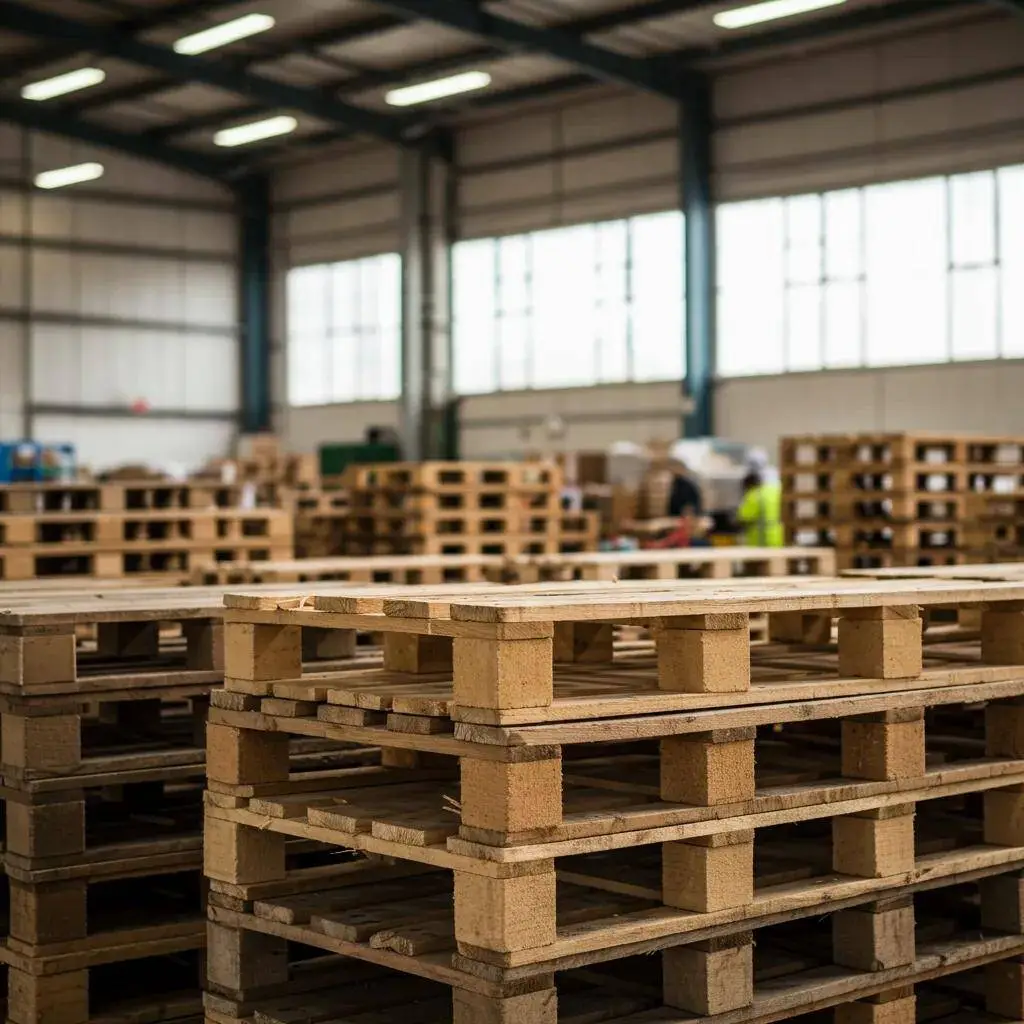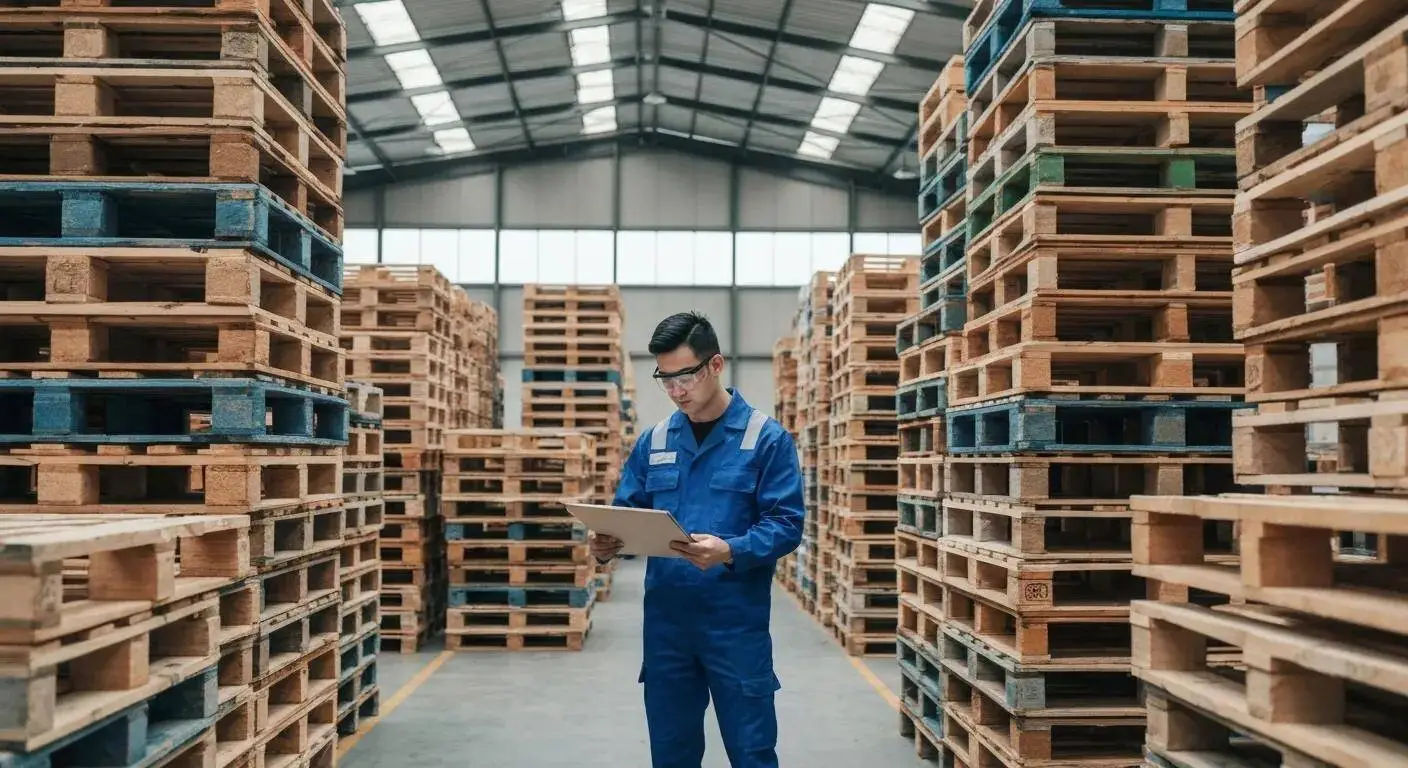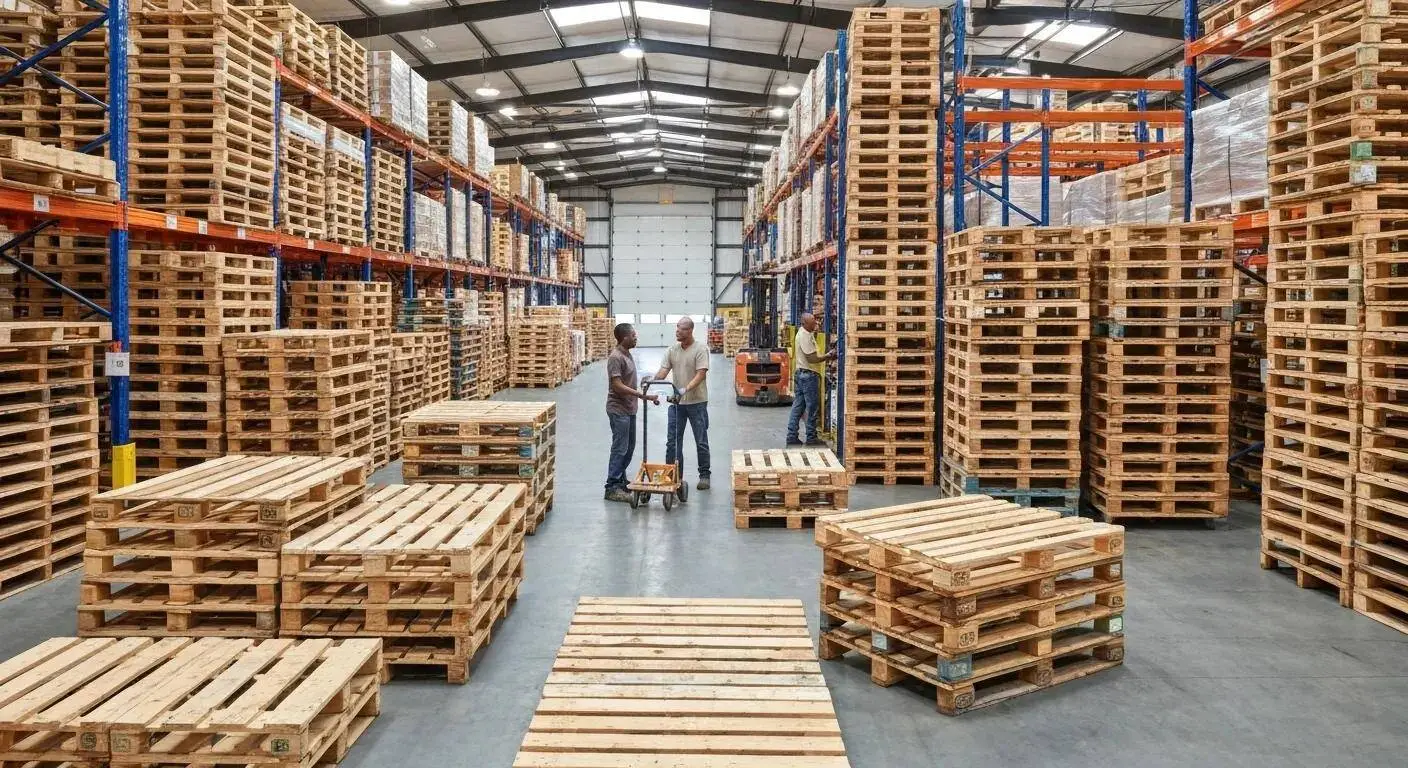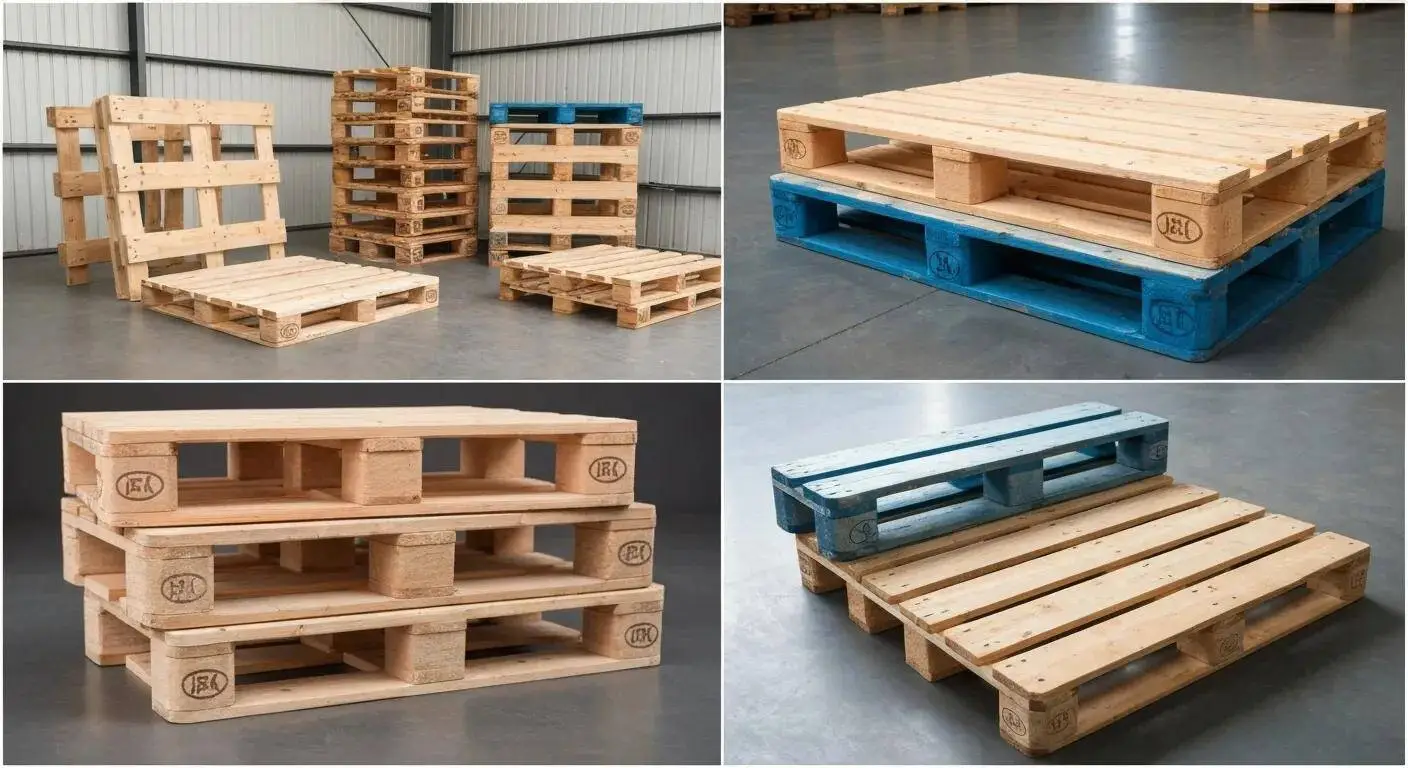
How to Choose the Right Custom Pallets for Your Business Needs in Lakeland, Florida
Custom pallets unlock tailored support for your products by matching exact dimensions, load requirements and handling conditions. Failing to select the right pallet design can lead to product damage, inefficient storage and elevated shipping costs—problems that custom pallets eliminate through optimized structure and material. In Lakeland, Florida, businesses like yours can benefit immensely from these tailored solutions. In this guide, you will discover:
- What custom pallets are and why they matter
- Key pallet types and material comparisons
- Critical design factors for durability and handling
- ISPM 15 export compliance essentials
- Sustainability strategies and lifecycle management
- How to evaluate pallet suppliers, like W W Pallets
- Best practices for maximizing cost savings and operational efficiency
Armed with this roadmap, you’ll confidently choose custom pallets that protect goods, streamline logistics and support long-term business growth in the Lakeland area.
What Are Custom Pallets and Why Are They Essential for Businesses?
Custom pallets are purpose-built transport platforms engineered to match specific product dimensions, weights and handling methods, delivering superior protection and efficiency. By replacing one-size-fits-all pallets, tailored pallets reduce damage rates, optimize storage layouts and lower total logistics costs for businesses in and around Lakeland.
What Defines a Custom Pallet Compared to Standard Pallets?
A custom pallet is a unique entity designed around specific attributes such as non-standard widths, reinforced decking or specialized entry points. Standard pallets typically follow fixed dimensions (e.g., 48×40 inches) and uniform materials, whereas custom pallets adapt board thickness, stringer placement and material selection to product fragility, weight distribution and handling equipment compatibility. This deliberate customization ensures secure load support and reduced handling risks.
What Are the Key Benefits of Using Custom Pallets?
Businesses leveraging custom pallets experience multiple advantages:
- Enhanced product protection through exact footprint matching and reinforcement
- Improved operational efficiency by enabling seamless forklift and racking integration
- Significant cost savings via reduced product damage and optimized trailer utilization
- Safer handling environments with tailored entry points and load-stabilizing features
- Sustainability gains through material optimization and extended pallet lifespan
Johnson, A., “Logistics Management” (2022)
Custom pallets deliver measurable logistics performance improvements, directly boosting ROI and customer satisfaction for companies in the Lakeland region.
How Do Custom Pallets Improve Supply Chain and Warehouse Operations?
Custom pallets optimize supply chains by aligning pallet dimensions with warehouse layouts and transportation modes. When pallets fit racking systems precisely, warehouse space utilization increases and retrieval times decrease. Tailored entry configurations reduce forklift repositioning, accelerating picking and loading cycles. In transit, pallets designed for specific load patterns distribute weight evenly, minimizing shifting and potential damage. These efficiencies translate into faster order fulfillment and lower handling costs for Lakeland businesses.
Which Types and Materials of Custom Pallets Should You Consider?

Selecting the right pallet material requires balancing durability, weight, hygiene and environmental conditions. For businesses in Lakeland, Florida, wood and composite pallets are often the most suitable choices, offering a balance of performance and cost-effectiveness. The table below compares common custom pallet materials across essential attributes.
Below is a comparison of material attributes to guide your selection process.
| Material | Durability | Moisture Resistance | Weight Profile | Typical Application |
|---|---|---|---|---|
| Wood | High tensile strength with repair options | Moderate; susceptible to rot | Medium–Heavy | General shipping, heavy loads |
| Composite | Tunable strength with corrosion barriers | Good; blends polymer and filler | Medium | Specialized environmental drives |
Comparing these materials clarifies which option meets your load capacity, hygiene and sustainability requirements.
What Are the Characteristics of Custom Wood Pallets?
Custom wood pallets offer high strength-to-cost ratios and can be tailored using hardwood or softwood species. Key components include:
- Stringers and Blocks: Provide structural support and entry points
- Deck Boards: Sized and spaced for even load distribution
- Notches and Chamfers: Facilitate four-way forklift access
Versatile in repair and recyclable, wood pallets suit a broad range of products and handling scenarios, though they require ISPM 15 treatment for export. W W Pallets specializes in providing high-quality custom wood pallets tailored to your specific needs.
How Do Composite Pallets and Their Performance Benefits?
Composite pallets blend polymer resins with wood fibers or minerals to balance cost, durability and moisture resistance. Composite pallets:
- Deliver moderate weight with corrosion protection
- Offer a compromise between wood’s recyclability and plastic’s hygiene
- Can be engineered for specific load and environmental demands
This engineered approach yields tailored performance for niche applications, providing a robust option for various industries in the Lakeland area.
How to Choose the Right Pallet Material Based on Product and Environment?
Selecting pallet material effectively requires evaluating:
- Product Characteristics – Fragility, weight, sanitation needs
- Operational Conditions – Indoor vs. outdoor, temperature and humidity in the Lakeland climate
- Handling Equipment – Forklift types, automated systems compatibility
- Cost Constraints – Initial investment vs. lifecycle costs
- Regulatory Requirements – ISPM 15 treatment, FDA-approved materials
By scoring each factor against material attributes, you can pinpoint the pallet composition that aligns with both product safety and budget.
What Are the Critical Design Considerations for Custom Pallets?

Effective pallet design hinges on dimensions, load behavior, equipment interfacing and application-specific demands. Getting these elements right ensures maximal durability and operational harmony for your Lakeland operations.
How Do Product Dimensions, Weight, and Fragility Affect Pallet Design?
Pallet dimensions and structural reinforcement must correspond exactly to product size, weight and fragility to prevent concentrated stress and shifting. Undersized deck boards can crack under heavy loads, while oversized pallets waste storage space. Fragile items demand additional support beams and cushioning features. Prioritizing proper sizing and weight distribution establishes a stable base that safeguards goods throughout transit.
Why Is Handling Equipment Compatibility Vital for Pallet Selection?
Pallet entry design must match forklift tine spacing, pallet jack dimensions and automated guided vehicle (AGV) parameters. Incorrect entry configurations impede handling and risk collisions. Four-way access designs improve maneuverability in tight aisles, while two-way entries may suffice in controlled loading docks. Harmonizing pallet geometry with equipment ensures seamless warehouse flow and reduces downtime.
How Can Custom Pallets Optimize Warehouse Storage and Space Utilization?
Stackable custom pallets and uniform deck heights maximize vertical storage, reducing aisle widths and boosting pallet positions per square foot. Nestable designs for wood or stringer pallets save space when empty. Custom labeling areas and RFID tag slots streamline inventory tracking. These innovations collectively heighten storage density and accuracy.
What Durability and Load Capacity Factors Should You Evaluate?
Assess reinforcement options such as heavier stringers, metal brackets or thicker deck boards to meet load capacity requirements. Factor in dynamic stresses during forklift insertion and pallet jostling in transit. Calculating maximum static and dynamic loads alongside safety margins prevents structural failures and extends pallet lifespan.
How Do Industry-Specific Needs Influence Pallet Design?
Different sectors impose unique requirements:
- Food & Beverage: FDA-compliant materials, easy washability
- Pharmaceutical: Clean-room compatible surfaces, chemical resistance
- Automotive: High-capacity pallets for engine and part transport
- Electronics: Anti-static deck boards and precise dimension tolerances
Tailoring pallet features to industry regulations and handling patterns delivers compliant, efficient solutions.
How Does ISPM 15 Compliance Impact Custom Pallet Selection for International Shipping?
ISPM 15 regulations govern wood packaging treatment to prevent pest transfer in global trade. Compliance ensures smooth customs clearance and reduces shipment delays for businesses exporting from Lakeland.
What Is ISPM 15 and Why Is It Important for Wood Pallets?
ISPM 15 (International Standards for Phytosanitary Measures No. 15) mandates treatment and marking of wood packaging to eliminate pests. Without this standard, wood pallets risk quarantine holds or rejections at border inspections, leading to costly shipping delays and fines.
Why Is Heat Treatment (HT) the Preferred ISPM 15 Compliance Method?
Heat treatment raises core wood temperature to 56 °C for at least 30 minutes, eradicating pests without chemicals. This method is:
- Environmentally friendly and residue-free
- Faster turnaround than fumigation
- Preserves wood integrity and strength
International Plant Protection Convention, “Guidelines for Regulating Wood Packaging Material in International Trade” (2018)
Heat-treated pallets reliably meet international phytosanitary requirements.
What Are the Drawbacks of Fumigation (MB) Compared to Heat Treatment?
Methyl bromide fumigation introduces toxicity concerns, requires longer ventilation periods and may leave chemical residues detrimental to sensitive cargo. Environmental regulations increasingly restrict methyl bromide use, making heat treatment the sustainable compliance choice.
How Do ISPM 15 Marking and Certification Facilitate Customs Clearance?
Treated pallets must bear the IPPC mark, including country code, treatment method (HT or MB) and unique facility identifier. This visible certification expedites customs inspection by providing verifiable evidence of treatment, reducing detention risk and ensuring uninterrupted supply chain flow.
How Can Sustainability and Pallet Lifecycle Management Benefit Your Business?
Implementing recycling, reuse and eco-friendly practices for custom pallets supports environmental goals while lowering total ownership costs through extended service life.
What Are the Benefits and Processes of Pallet Recycling?
Pallet recycling diverts wood waste from landfills and recovers material value. Common processes include:
- Mechanical shredding into mulch or biomass fuel
- Reprocessing into composite boards
- Donating reclaimed boards for secondary uses
Recycling initiatives reduce raw material demand, lower disposal fees and reinforce corporate sustainability targets.
How Do Pallet Reuse and Repair Extend Pallet Lifespan?
Routine inspections and minor repairs—such as replacing deck boards or reinforcing stringers—can extend a pallet’s usability by multiple cycles. Repair programs save 30–50 percent of replacement costs and minimize environmental impact by delaying end-of-life recycling.
What Eco-Friendly Materials and Practices Support Sustainable Pallet Solutions?
Incorporating reclaimed wood, certified sustainably harvested timber or bio-composite materials reduces carbon footprint. Closed-loop rental systems and deposit models encourage pallet return and refurbishment, enhancing resource efficiency and promoting circular economy principles.
What Should You Look for When Choosing a Custom Pallet Supplier?
Selecting an experienced supplier ensures your pallet requirements are met on time, within budget and in compliance with regulations. For businesses in Lakeland, partnering with a local expert like W W Pallets can provide significant advantages.
What Key Qualities Define a Reputable Custom Pallet Supplier?
A top supplier demonstrates:
- Deep expertise in pallet engineering and material science
- In-house design software and prototyping capabilities
- ISPM 15 treatment and certification processes on-site
- Quality management certifications (e.g., ISO standards)
- Transparent lead times and traceability
These attributes guarantee reliable delivery of pallets engineered to your specifications.
How Do You Request an Accurate Custom Pallet Quote?
When requesting quotes, provide:
- Detailed product dimensions, weight and fragility data
- Expected load patterns and pallet stacking requirements
- Handling equipment types and automation interfaces
- Export or hygiene regulations (e.g., ISPM 15, FDA)
- Annual pallet usage volumes and delivery schedules
Thorough specifications enable precise cost estimation and avoid scope changes down the line.
Why Is Customer Service and Support Important in Pallet Supplier Selection?
Ongoing collaboration with your supplier ensures swift adjustments to design, urgent rush orders and continuous improvement initiatives. Dedicated account management, technical support and responsive communication foster long-term partnerships that adapt to evolving operational needs.
What Are the Best Practices for Optimizing Custom Pallet Use in Your Business?
Adopting data-driven and design-focused strategies maximizes pallet ROI while reinforcing supply chain resilience.
How Can Custom Pallet Design Improve Cost Savings and Efficiency?
Aligning pallet dimensions to carton sizes and pallet racking increases payload per shipment and reduces freight costs. Reinforced deck options and integrated anti-slip surfaces minimize damage claims and liability. Design choices that match automation specifications cut handling time and labor expenses.
What Role Does Internal Linking and Structured Data Play in Pallet Information Management?
Organizing pallet specifications, test results and design guidelines in a centralized digital catalog with structured data (e.g., JSON-LD schema) simplifies cross-team access and system integration. Clear tagging of pallet types, materials and compliance status enhances retrieval in ERP, WMS and procurement platforms.
How Can Case Studies and Industry Examples Guide Your Pallet Decisions?
Reviewing real-world examples—such as a food distributor reducing breakage by 40 percent with FDA-approved plastic pallets or a manufacturer gaining 10 percent more storage using nestable composite designs—illustrates measurable outcomes. These success stories inform design priorities and build confidence in chosen solutions.
Custom pallets empower businesses to safeguard products, streamline logistics and advance sustainability goals. By assessing material options, design factors, compliance demands and supplier capabilities, you can implement pallet solutions that drive efficiency and reduce total cost of ownership. Begin defining your unique pallet requirements today and partner with an expert provider like W W Pallets to unlock the full value of customized pallet systems in Lakeland, Florida.
Ready to Optimize Your Pallet Solutions?
Contact David Lacy at W W Pallets to discuss your specific needs and get a personalized quote. Let us help you find the perfect custom pallet solution for your business.
Phone: (813) 707 -8474
